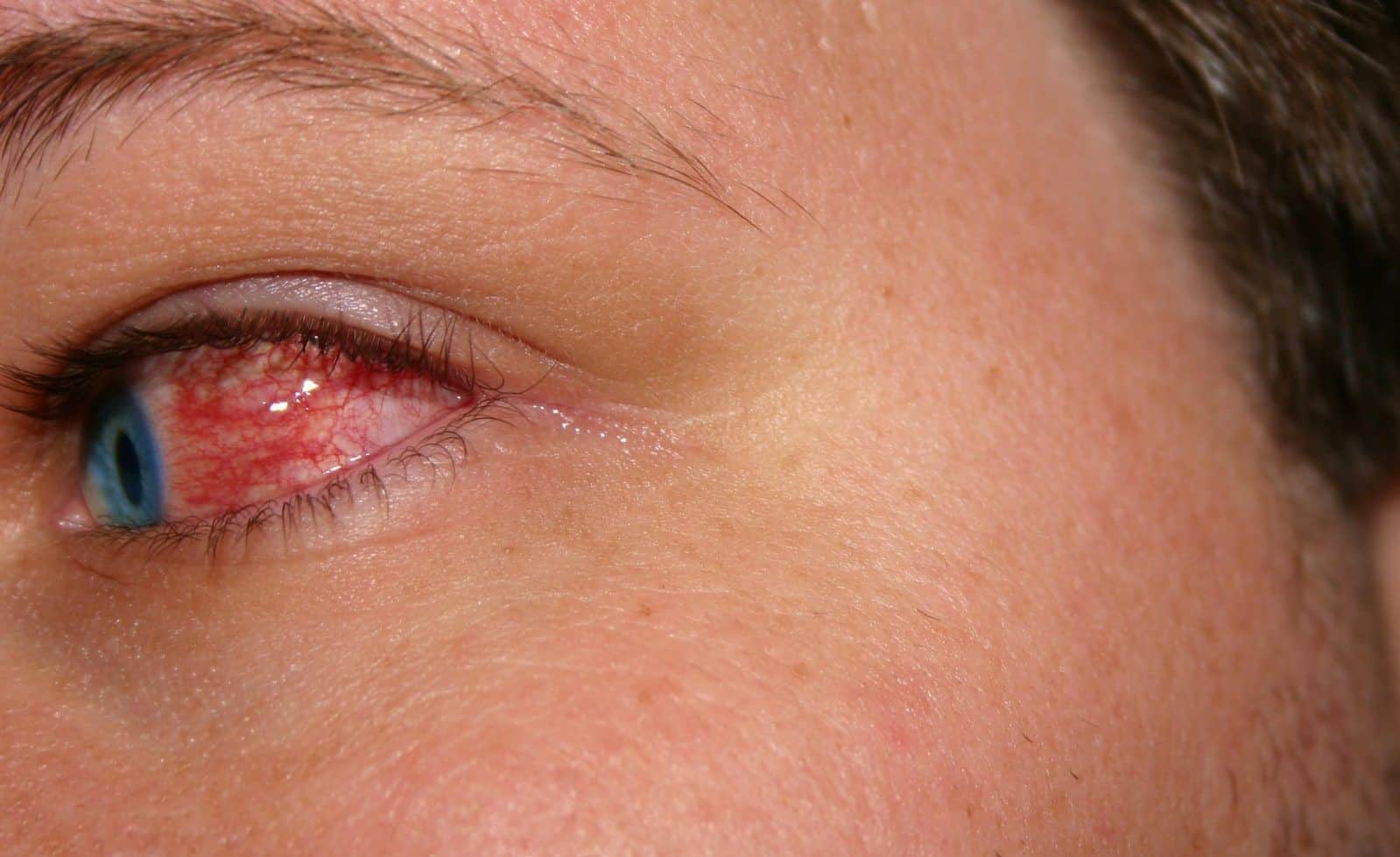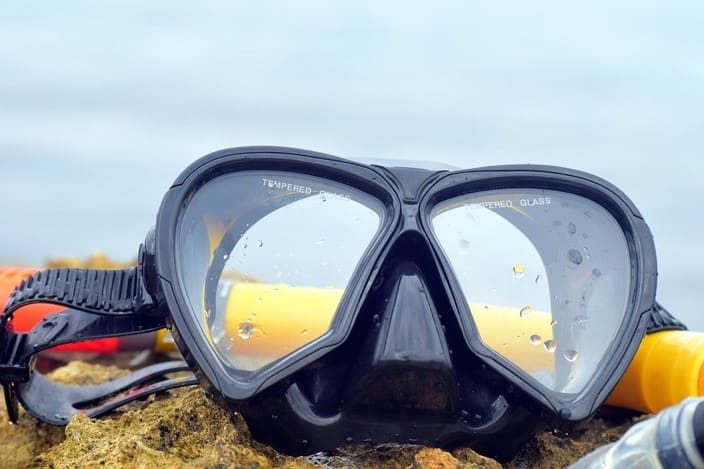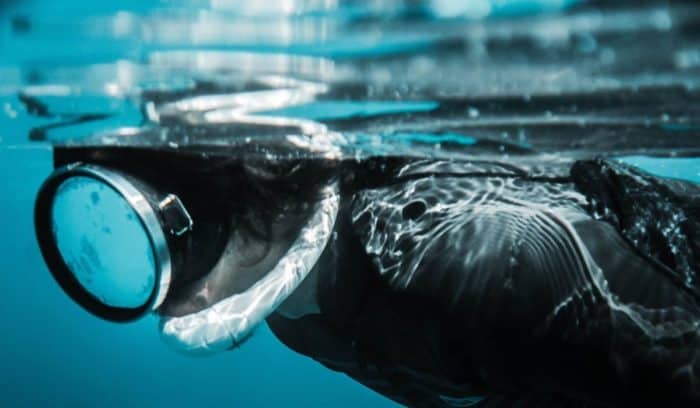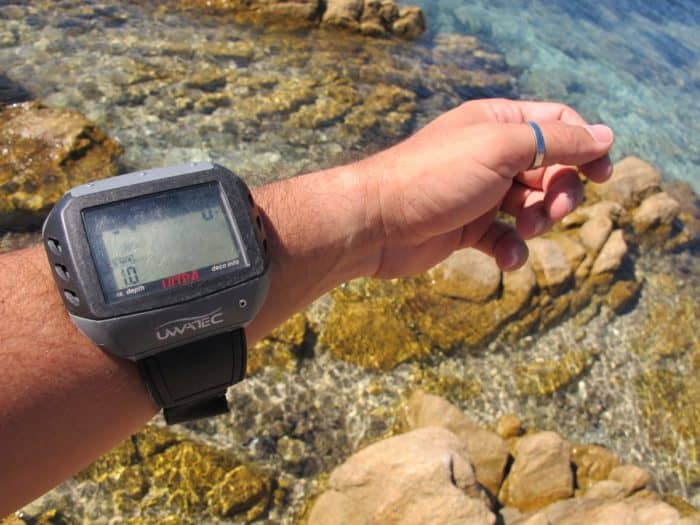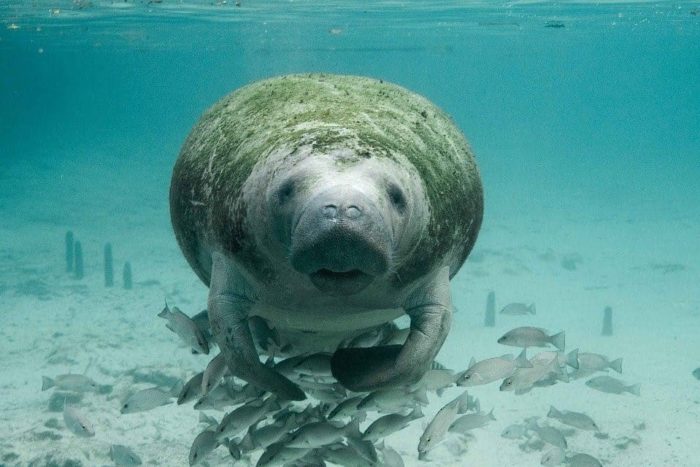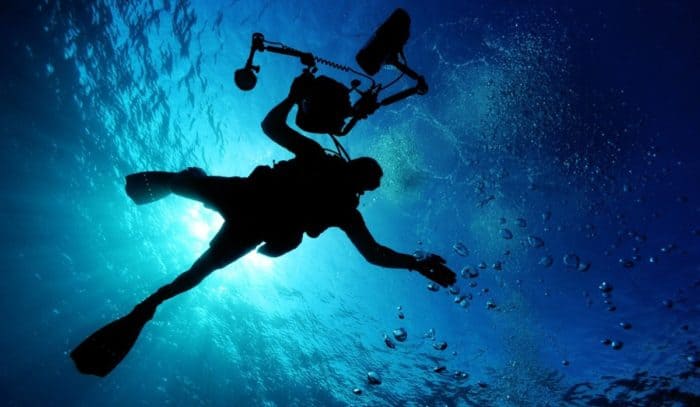What is Mask Squeeze And How to Prevent It
While it is not life-threatening, mask squeeze can cause discomfort, and you might scare people with red-shot vampire-like eyes. You may experience mask squeeze when freediving, scuba diving, or snorkeling.
Below is all you need to know about mask squeeze, how to prevent it, and what to do if you get it.
What Is Mask Squeeze?
Mask squeeze is also known as facial barotrauma or face squeeze. It happens when there is no air equalization inside your diving mask. It is most likely to happen within the first 10 meters of descending as your body and mask acclimatize to the increasing water pressure.
When scuba diving or freediving, as you descend into the waters, the increasing water pressure causes the mask to compress against your face. The compressed mask exerts pressure on your eyeballs, which eventually results in busted vessels causing your eyes to redden, a condition referred to as subconjunctival hemorrhage.
Causes of Mask Squeeze
Mask squeeze can be a result of several factors:
- Lack of equalization. Sometimes, divers forget to equalize as they descend, causing an imbalance in the mask’s air pressure. In some cases, the air you are releasing on the exhale may not be adequate to balance air pressure within the mask.
- Wearing an ill-fitting mask or the wrong mask. Larger volume masks are more prone to mask squeeze. Also, strapping your mask too tightly may cause pressure on your eye muscles.
- Pressing your mask against your face. This often happens when you are trying to let water out of the mask. It is expected that some water may enter your mask. To let it out, tilt your head upwards as you exhale. This will create a little space between your face and the bottom of the mask where the water can sip out on its own.
- Descending too fast. The water pressure increases the deeper you descend. If you are descending too fast, you might not be able to exhale and equalize consistently.
Signs of Mask Squeeze
The most obvious sign of mask squeeze is a bloodshot eye or blood spots in the white part of the eyes. Other signs include:
- Bruise marks or reddening on the face
- Feeling pressure on your face
- Nose bleeding
- Difficulty seeing or blurred vision
How To Prevent Mask Squeeze
Here are the measures you can take to prevent mask squeeze:
Equalize as often as possible on your way down
Equalizations plays a critical role in maintaining ear pressure when diving and also in preventing mask squeeze. Equalization entails controlled exhalation through your nose when in the water.
Methods of equalization
There are two main methods of equalization: Valsalva equalization and Frenzel equalization. Although the techniques vary, they are similar in that both are done by exhaling with a pinched nose. For both, it is best to keep your hand position near your nose as you descend to avoid having to keep taking your hand up and down.
Valsalva equalization utilizes the respiratory muscles, which contract (by contracting your abdominals). It pushes the air out of the lungs into the nasal cavities and ears, balancing the middle ear and the air pressure inside the mask.
The challenge with this technique is that as you are freediving, the lungs’ volume in the lungs is constantly shrinking. After 10-15 meters, the air volume in your lungs becomes significantly low, and there is not enough air volume to push out through the nose.
With the Frenzel equalization technique, you contract your tongue and throat to push the air in your mouth into your nasal cavity. The Frenzel technique is a better approach for equalizing as it can be able to take you down for up to 50 meters. It also does not take up too much of your energy and focus, as is the case with the Valsalva technique
Do not use swimming goggles when scuba diving or freediving
Swimming goggles have larger spaces all around that trap air once you wear them. Since they are not connected to your nose, you do not have a way of equalizing the air in the googles.
Go for small volume masks
A smaller volume mask traps less air, and although you will still have to equalize as you descend, it will be for fewer times than you would with a bigger volume mask.
Choose the right mask size
The right mask should not fit too snugly around your eyes or too tightly around your head. A slightly bigger than well-fitting fit before you enter into the water is the ideal fit. Though it may seem slightly on the larger side, once you get into the water, the water pressure will create suction between the mask and your face that will keep the mask in place.
Opt for silicone masks
Their skirting sits comfortably on your face without causing bruising even when the mask is moved slightly by the increasing water pressure as you descend.
Descend slowly
It will give you ample time to equalize as you descend.
Mask Squeeze Treatment
In most cases, the mask squeeze signs and symptoms clear on their own within a few hours of getting out of the deep waters. Usually, the redness becomes more faded or clears up in a descending pattern before completely fading away. The eyes may become greenish-yellow before becoming white again.
It is best to avoid diving again until all the mask squeeze symptoms have completely cleared up. Diving before a full recovery may cause the symptoms to get worse.
In rare cases, you may experience pain and affected eyesight, or eye redness may last for up to a fortnight. With such advanced symptoms, it is best to see a doctor. They may prescribe antibiotic drops to clear any infection that may have resulted from the busted blood vessels.
Although mask squeeze is not such as serious injury, it can keep you out of the waters for a while. Therefore, it is best to prevent it. Learn the most effective equalization techniques such as Frenzel and equalize often as you descend.
Also, ensure you have the right mask in the right size. In case you experience adverse signs such as obstructed eyesight, pain, or prolonged redness, see a doctor.
Categories: Scuba, Snorkeling
